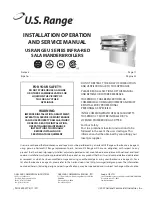
Pre-Installation
6720814332 (2018/04)
11
Before cleaning the system:
▶ Ensure that the system and pipe work is in good working order.
▶ Where possible keep the existing boiler/circulating pump in place
when flushing the system.
3.2
Water quality
Unsuitable or contaminated heating water can lead to faults in the boiler
and can damage the heat exchanger, among other things, due to sludge
formation, corrosion or lime scale deposits. Please get in touch with the
manufacturer if you require additional information on the water quality.
You will find the relevant addresses on the back cover of these
instructions.
▶ Do not use any chemical additives (e.g. inhibitors or pH-increasing or
reducing agents) other than those approved by Bosch
Thermotechnology (
table 9). The pH of the heating system water
must be between 7 and 8.5. If this is not the case, please contact
Worcester Customer Service before proceeding.
3.3
Mains supply
3.3.1
Electrical supply
• Supply: 230V - 50 Hz, 130 Watts
• Cable: PVC insulated H05VVF 3G1 (3 x 1mm
2
) temperature rated to
90 °C.
• External 3A fuse to BS1362.
• The boiler must be earthed.
• IPX4D.
• Wiring must comply with the latest edition of BS 7671 (IEE wiring
regulations).
3.3.2
Gas supply
• Boilers using Natural Gas (NG) must be connected to a governed
meter.
• Liquid Petroleum Gas (LPG) must be connected to a regulator.
• Installation and connection of the gas supply to the appliance must
be in accordance with BS6891 or IGE/UP/2 as appropriate.
• Gas pipe sizing should be calculated to ensure no more than the
permitted pressure drop between the meter/governor to the
appliance inlet (
Commissioning section).
• The meter or regulator and pipe work to the meter must be checked,
preferably by the gas supplier.
• This is to ensure that the equipment is in good working order and can
meet the gas flow and pressure requirements, in addition to the
demand from any other appliance being served.
3.4
Water systems and pipe work
If the boiler is used in heating systems with natural water circulation or
open systems (where heating water is in contact with outdoor air):
▶ Install a system separation solution (a plate heat exchanger for
example) between the boiler and the heating system
If plastic pipes are used in the heating system, with an underfloor heating
system for example,
▶ use plastic pipes with sufficient oxygen diffusion resistance
-or-
▶ Install a system separation solution (a plate heat exchanger for
example) between the boiler and the heating system.
Plastic pipe work:
• Any plastic pipe work must have a polymeric barrier with 600mm
(minimum) length of copper pipe before being connected to the
boiler.
• Plastic pipe work used for underfloor heating must be correctly
controlled with a thermostatic blending valve limiting the
temperature of the circuits to approximately 50°C.
Primary systems connections/valves:
• All system connections, taps and mixing valves must at least be
capable of sustaining a pressure equal to the opening pressure of the
PRV used.
• Radiator valves should conform to BS2767:10.
• All other valves should conform to BS1010.
• Thermostatic radiator valves (TRV’s) must be fitted to all rooms
except bathrooms and the room in which the room thermostat is
fitted.
• A drain cock is required at the lowest point(s) in the system.
• An air vent is required at the high point(s) in the system.
Sealed primary system:
• The CH sealed system must be filled using a WRAS approved filling
method or comply with figure 10 for system fill.
• An expansion vessel must be fitted as close as possible to the
appliance in the central heating return. When a pump group is used,
see Chapter 5.11.
• Do not use galvanised pipes or radiators.
System fill:
Filling and refilling of the heating circuit must have been carried out by a
method that has been approved by the Water Regulation Advisory
Scheme (WRAS), for the type of heating appliances, i.e. Domestic (in-
house) Fluid Category 3. Non-Domestic (other than in-house) Fluid
Category 4. Depending on the Fluid Category the approved method
should comprise of the following:
Requirements Fluid Category 3 systems
• Control valve (stop valve) including a double check valve on the
mains cold water supply pipe.
• Temporary connection to be removed after filling (filling loop).
• Control valve (stop valve) on the heating system pipework.
NOTICE:
▶ Debris from the system can damage the boiler and
reduce efficiency.
Failure to comply with water treatment guidelines
will invalidate the appliance guarantee and
contravene the Building Regulations.
▶ It is recommended that you fit a primary water
cleanser to the system. Worcester recommends a
filter that will help remove both magnetite and non-
magnetic debris.
Product
Concentration
Fernox F1
See Fernox product data sheet
Sentinel X100
See Sentinel product data sheet
Table 9 Approved inhibitors by Bosch Thermotechnology Ltd.
NOTICE:
This boiler must not be connected to a 3 phase supply.
An external automatic bypass should be used if the
system flow can be significantly adjusted or stopped by
zone valves and thermostatic radiator valves (TRV).
NOTICE:
Artificially softened water must not be used to fill the
central heating system.
Summary of Contents for Worcester GB162-100 V2
Page 49: ...6720814332 2018 04 49 Notes ...












































